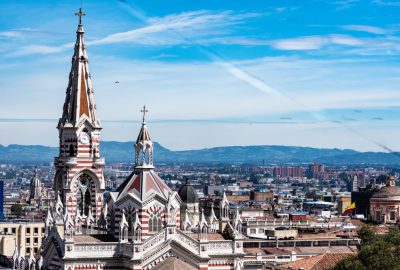These days every other 5-year-old kid knows that cocaine comes from Colombia. People watched a few episodes of a series and everyone is an expert. They think they’re cool with their Narcos ringtones and Plata O Plomo t-shirts. Locals in Bogotá don’t think it’s cool, they think it’s very offensive. Talking about coke in Bogotá is like talking about the Holocaust in Europe. Ask anyone in Colombia about that drug and they’ll tell you how destructive it was for their homeland. Indigenous people have used the plant for generations to boost their stamina during hard work. Nowadays it’s just a recreational drug for rich yuppies. The worldwide obsession with the drug started in the late 1960s. I’m sure everyone has seen Blow or Scarface starring Tony Montana: Al Pacino’s most iconic character. Now it’s an occasional news story about packets of coke popping inside some mule’s ass. It’s all natural selection, I’m just sorry that it’s detrimental to Bogotá. The Colombian capital deserves better than being the famous drug mule airport city.

La Candelaria in Bogota: the eclectic mix of colonial history and vibrant modern city life is one of Bogota's principal tourist destinations
Bogotá is a beautiful colonial metropolis rising from bloody fundaments. Plaza de Bolivar is dedicated to one of South America’s greatest heroes. His full name was Simón José Antonio de la Santísima Trinidad Bolívar Palacios Ponte y Blanco (these ridiculously long Spanish names crack me up). He is the main reason why Colombia is now independent of the Spanish rule. La Candelaria encircles the Plaza, it’s the oldest and most charming district of Bogotá. There’s something enchanting about that colonial architecture, low-rise buildings, and old churches. It’s also the main tourist hub with the nightlife and comfy hostels. You should check one of the many tejo bars around Bogotá. Tejo is their traditional pastime of throwing fireworks at stuff while drinking beer. If you’re after some more refined entertainment then Zona Rosa is the place to go. Upscale clubs, shopping, tidy restaurants, that sort of stuff. People say the same about El Centro but to my humble opinion it’s overhyped.
Cerro Monserrate lies to the west of La Candelaria. It’s a mountain in the middle of the city, over 3000m above sea level. It was a sacred place of power long before the Christians arrived and built their churches. The ancient Muisca people called it “the grandmothers’ foot”. Muisca was the fourth great civilization alongside the Incas, Aztecs, and Mayans. During the solstice in June the sun rose precisely above Monserrate. Pre-Colombian civilizations had extensive knowledge of astronomy; celestial matters were crucial to them. The conquistadors came and built an ominously sounding “Shrine of the Fallen Lord” on top. Pilgrims and tourists regularly hike or take a cart to the summit. You can see the entire Bogotá from there if the weather allows. You can explore the church or the restaurants and souvenir shops if it’s cloudy.
If you’re into the religious stuff then Zipaquira should be your next stop. It’s an old salt mine turned into an underground complex of shrines and halls, and it’s otherworldly. Muisca people mined rock salt in the same exact spot around the 5th century BC. Imagine a functional mine, which by itself is a cool thing to see, with miles upon miles of tunnels and chambers. They say over 3000 believers visit the “Cathedral” for Sunday mass. That’s a staggering number, not even counting the tourist traffic. They carved three main chambers depicting the life of Jesus. It’s a bit dark and scary as well, especially with that cold, ultraviolet lighting. It could be an awesome nightclub.

Thanks to its decorative Florentine Gothic architecture Santuario Nuestra Señora del Carmen is considered the most beautiful church of Bogota
Gold was a sacred substance for the Muisca and they frequently offered it to their gods. How exactly did they do it? They threw it into the Guatavita lake northeast of Bogotá. They say it’s the birthplace of the legend of El Dorado, the Golden City. I don’t buy it, it’s not a city, it’s a lake and the real deal is most likely hidden somewhere in or beneath the jungle. El Museo del Oro in Bogotá is the closest thing to El Dorado you’ll find. This museum houses over 55 000 pieces of golden art from pre-Colombian South America. It’s hard to believe that some of those wonders were created by a culture we now consider primitive. The third floor is the most interesting for me. It’s an exhibition about all the shamanistic rituals they used gold in: very cool.
Bogotá went through major development, but make no mistake, it’s still shady. You might not feel endangered but you’re not exactly super-safe either. Remember that poverty is still an issue and drugs, common thievery, scams, and violence go with it. If someone approaches you with “un poco perico” (coke) you’d best decline; unless it’s not your first rodeo and you know what you’re doing.




No one commented yet. Be the first.